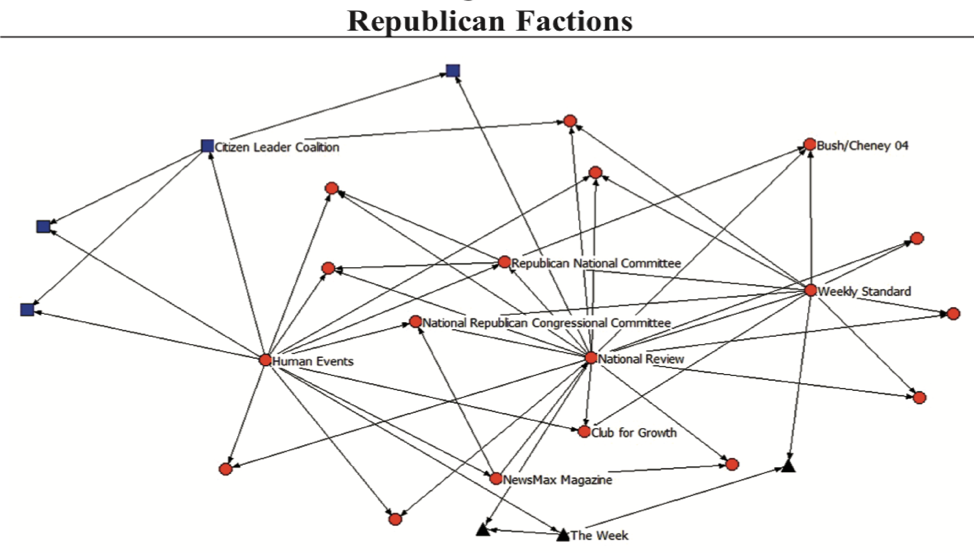The Weekly Standard announced last week that, after a 23-year run, it would cease publication. The closure of the prominent conservative news outlet isn’t just a tragedy for the field of journalism—it’s a scary sign for the future of the Republican Party. Specifically, its demise signals, in many ways, the further erosion of conservatism as a coherent ideology, and its replacement by a Trump personality cult.
There are a number of political science studies that help us make sense of The Weekly Standard‘s shuttering. One is a 2010 article that Gregory Koger, Hans Noel, and I wrote, published in American Politics Research, which attempted to map out political party networks by contributing a series of small donations to candidates, memberships to interest groups, and subscriptions to political publications. The goal was simple: to track where those organizations sold our addresses. (We coded our return addresses so as to make them easily traceable.) Through this experiment, we were able to develop a good idea of which political organizations were aligned with each other, and how those factions shared information among themselves.
The map of the Republican coalition can be seen below. The network map suggests that the coalition was oriented around three publications: Human Events, National Review, and The Weekly Standard. Other organizations, such as the Republican National Committee and the Bush/Cheney presidential campaign (the experiment was partly conducted in 2004) were clearly important, but those magazines shared more information and had ties to more segments of the party than any other organizations included in the analysis.

Of these three publications, only National Review now remains as an influential conservative voice. The Weekly Standard is being shut down, and Human Events, once home to a number of prominent conservative voices, is now little more than a news aggregator reposting articles by—and only by—Ann Coulter and Paul Dykewicz.
Whereas the Republican Party network relied most heavily on just a few organizations, the Democratic Party network was far more crowded, meaning a single publication was more critical to the conservative network than to the liberal one. Here’s our network graph for the Democrats, from that same paper:

The demise of, say, The New Republic or The New Yorker would be a loss for liberalism, but there would be many other organizations that could step in and play a similar role for generating and transferring information throughout the party.
As Noel explains in his book Political Ideologies and Political Parties in America, it is publications like The Weekly Standard that define just what conservatism is. Noel’s book relies on decades of opinion pieces in political magazines and demonstrates that such publications hammer out just what an ideology stands for, and they set the terms of debates for politicians and parties for years to come. To the extent modern conservatism is a coherent ideology, it is one because these main publications have constructed it and protected it for decades.
In their recent book, Asymmetric Politics, Matt Grossmann and David Hopkins argue that a key difference between the modern major parties is that Republicans are an ideological coalition while Democrats are a group-oriented one. To the extent this captures what’s going on in modern American politics, it suggests that the demise of a key ideological publication is far more costly for Republicans than it would be for Democrats.
These studies give us an idea of what the decline of conservative publications mean: an ideology without fixed principles and a party without a rudder. It’s very consistent with trends we’ve seen since Donald Trump‘s nomination, where one strain of conservative writers is increasingly distancing itself from the Republican Party, while another strain exists to echo and rationalize whatever Trump most recently said. You can see some of the The Weekly Standard‘s writers wrestling with this issue in this fascinating recent discussion with FiveThirtyEight.
The Republican Party is going to need to chart a new path after Trump’s presidency, and there’s a decent chance that deadline is coming ahead of schedule. Unfortunately, with the demise of The Weekly Standard, it will now be even harder for them to turn the ship.





